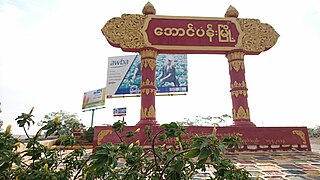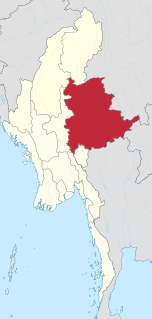Hsamonghkam or Hsamönghkam (also known as Thamaingkan) was a Shan state in the Myelat region of Burma. Its capital was Aungban.

Myelat is a historical region of the southwestern Shan State of Myanmar. Originally this region included some of the smaller states typically ruled by "Myosas" or "Ngwegunhmus", buffering the plains of Burma and the ethnic Shan states further east.

Aungban is a town located in the Southern Shan State. It is located in Kalaw Township which is part of Taunggyi District. It lies at the elevation of 4219 feet above sea level. As of September 2017, its population was recorded 30313. It is a junction town and thus majority of agricultural products from nearby towns and villages are collected there by traders and distributed to other parts of country, especially to Yangon, Mandalay, Kayin and Mon States.
Hsamonghkam was established before 1700 CE. During the 18th and 19th centuries it was a tributary of Burma. In 1886, following the fall of the Konbaung dynasty, it submitted to British rule. It became a part of the unified Shan State within Burma in 1947.

The Konbaung dynasty, formerly known as the Alompra dynasty, or Alaungpaya dynasty, was the last dynasty that ruled Burma/Myanmar from 1752 to 1885. It created the second-largest empire in Burmese history and continued the administrative reforms begun by the Toungoo dynasty, laying the foundations of the modern state of Burma. The reforms, however, proved insufficient to stem the advance of the British, who defeated the Burmese in all three Anglo-Burmese wars over a six-decade span (1824–1885) and ended the millennium-old Burmese monarchy in 1885.

Shan State is a state of Myanmar. Shan State borders China to the north, Laos to the east, and Thailand to the south, and five administrative divisions of Burma in the west. Largest of the 14 administrative divisions by land area, Shan State covers 155,800 km², almost a quarter of the total area of Burma. The state gets its name from the Shan people, one of several ethnic groups that inhabit the area. Shan State is largely rural, with only three cities of significant size: Lashio, Kengtung, and the capital, Taunggyi. Taunggyi is 150.7 km north east of the nation's capital Naypyitaw.
Sao Htun Aye, The last myosa of Hsamonghkam, abdicated and surrendered his powers to the Burmese government on 29 April 1959.






